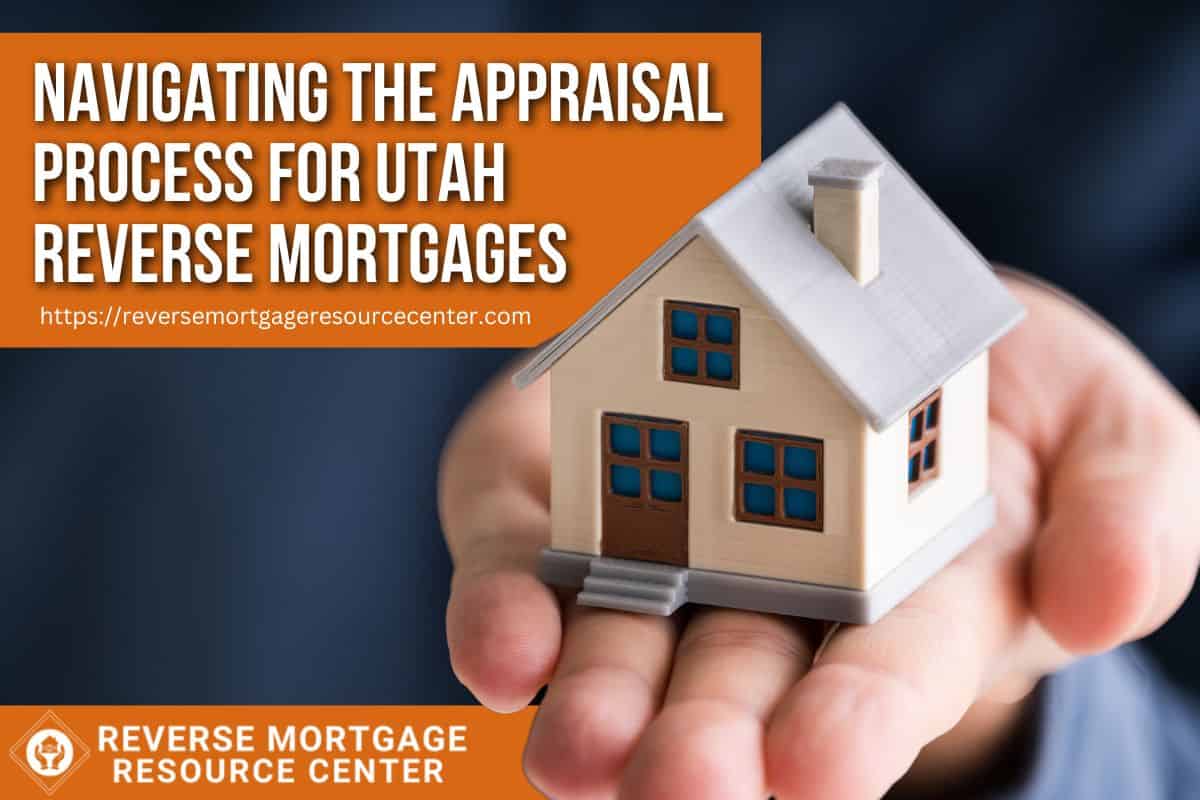Navigating the Appraisal Process for Utah Reverse Mortgages
As Utah elders encounter financial issues during retirement, they must investigate numerous possibilities to protect their financial well-being. The Utah Reverse Mortgage is one such option that has grown in popularity. This financial strategy allows homeowners aged 62 and up to access the equity in their property while continuing to live in it. However, before entering into this financial arrangement, it is critical to understand the appraisal process, which is critical in establishing the sustainability of a reverse mortgage. We will walk you through the appraisal process for Utah reverse mortgages in this comprehensive guide, providing you with the information you need to make an informed decision.
Understanding Reverse Mortgages
Before we get into the appraisal process, let’s go over a reverse mortgage and why it might be useful for Utah seniors facing financial difficulties.
A reverse mortgage is a one-of-a-kind home loan intended just for elders. A reverse mortgage, as opposed to a regular mortgage, allows homeowners to receive payments from the lender, essentially transforming a portion of their home equity into cash. This financial arrangement can be especially advantageous for elders because it provides:
Supplemental Income: Reverse mortgages provide a consistent source of income that can assist seniors in managing daily expenses, healthcare costs, and any financial difficulties they may have throughout retirement.
No Monthly Payments: One of the most tempting aspects of a reverse mortgage is the absence of monthly mortgage payments. The loan is repaid when the homeowner sells the house or dies.
Retained Homeownership: Seniors who meet specific criteria, such as maintaining the property and paying property taxes and insurance, can continue to reside in their houses.
Flexible Distribution Options: Borrowers might receive payments in a variety of methods, including a flat sum, monthly installments, or a line of credit, depending on their financial circumstances.
However, the appraisal procedure decides how much a senior can borrow through a reverse mortgage.
The Role of Appraisal in a Reverse Mortgage
The property’s appraised value mostly determines the amount a homeowner can borrow under a reverse mortgage. The appraisal procedure provides two critical functions:
Determining the Property Value: The appraiser determines the home’s market value. This valuation determines the maximum loan amount available to the homeowner.
Ensuring Loan Viability: Lenders use appraised value to ensure the loan does not exceed the property’s value. This precaution protects both the homeowner and the lender.
Now, let’s look at the assessment procedure for Utah reverse mortgages.
The Utah Appraisal Process
The assessment process for Utah reverse mortgages is standardized, similar to appraisals for ordinary mortgages. The following are the important steps:
1. Hiring a Certified Appraiser
Hiring a certified appraiser is the first stage in the appraisal procedure. Appraisers must have particular requirements and certifications to perform property evaluations in Utah, like in other states. The appraiser you pick for your reverse mortgage evaluation must be certified and knowledgeable in evaluating residential properties.
2. Property Inspection
The qualified appraiser will come to your home to perform a complete inspection. They will analyze different aspects of the property during this inspection, including:
Property condition: The appraiser will evaluate the property’s general condition, including the foundation, roof, plumbing, electrical systems, and any visible signs of wear and tear.
Property size and features: They will measure the square footage of the home and take note of any distinguishing features, such as a pool, garage, or additional living spaces.
Comparables: Appraisers will also analyze comparable properties in the region to accurately determine the market value of your house.
3. Property Valuation
Following the inspection, the appraiser will consolidate all of the information gathered and utilize it to calculate the current market value of your home. This assessment is critical in determining the maximum loan amount available through a Utah reverse mortgage.
4. Submitting the Appraisal Report
When the appraisal is finished, the appraiser will provide you and your lender with a full appraisal report. This report includes the appraiser’s appraisal of the value of your property, a discussion of the criteria involved in the valuation, and any recommendations for repairs or upgrades if any are required.
Factors That Influence Property Valuation
Several factors can influence your property’s valuation throughout the appraisal process. These considerations must be considered because they can affect the amount you can borrow with a Utah reverse mortgage:
1. Location
The location of your home can have a big impact on its value. Property values in desirable neighborhoods or places with robust real estate markets tend to be higher.
2. Property Condition
The general condition of your home is critical. Well-maintained homes with contemporary features typically command greater prices. If your home requires considerable repairs, the appraiser may advise you to remedy these issues before applying for a reverse mortgage.
3. Comparable Sales
Appraisers frequently utilize recently sold houses in your neighborhood that are similar to yours (comparables) to determine the value of your home. Your property’s valuation may benefit if recent comparable sales indicate a strong market.
4. Property Size and Features
The size and characteristics of your property, such as the number of bedrooms, bathrooms, and any other facilities, might impact its worth. Larger properties or those with desirable qualities may command a greater price.
5. Market Conditions
The present situation of the real estate market in your area can impact the appraised value of your property. Property values may rise in great demand and low supply, but property values may fall in slow markets.
Maximizing Your Reverse Mortgage Appraisal
Consider the following recommendations to make the most of the reverse mortgage assessment process in Utah:
1. Home Maintenance
Before the appraisal, make sure your property is in good condition. Complete any essential repairs or maintenance work to present your home in the best possible condition.
2. Curb Appeal
First impressions are important. Maintain the landscaping, paint, and clean the exterior of your property to increase its curb appeal. A well-maintained exterior can impact the appraiser’s view of your property.
3. Gather Documentation
Prepare any relevant documents, such as records of recent improvements or modifications, that can support the value of your property. These documents can assist the appraiser in making a more accurate determination.
4. Be Present During the Appraisal
While it is unnecessary, being present during the appraisal allows you to contribute additional information about your property’s distinctive features or recent upgrades, which may influence the appraiser’s assessment.
5. Stay Informed
Keep current on local real estate trends and property values in your region. Understanding the current market conditions will help you better comprehend the assessment process and the elements that influence the value of your home.
REVERSE MORTGAGE RESOURCE CENTER ~LIVE LIFE ON YOUR TERMS~
Our Lending Team has been serving our clients since 2004. We are passionate about serving our clients with integrity to help them achieve their financial goals.







